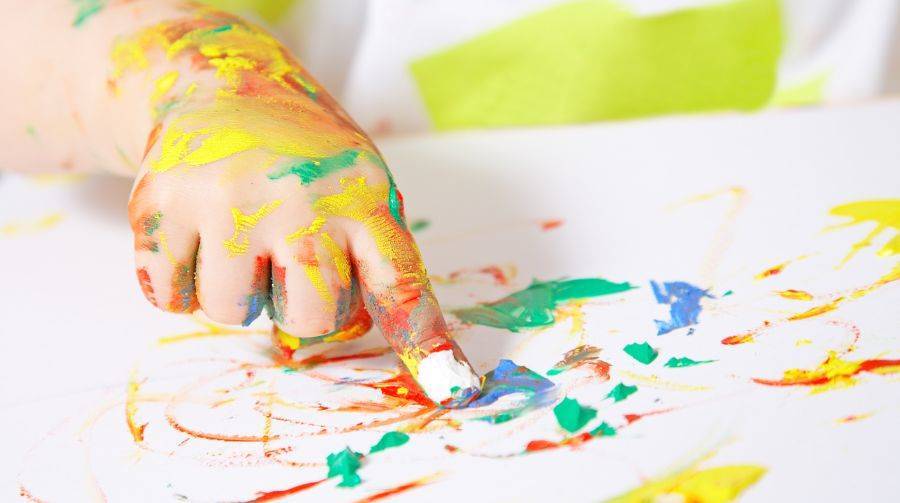Finger paintings are a lost art in our day and age, but was so important to children's development early on. Engaging in this activity promotes cognitive thinking, as well as creativity and self-expression. Children get the chance to further explore their artistic skills while also getting an advanced understanding of colours in a way that makes sense to them. They can see what they create with their fingers on paper. Review some highlights from this article, such as how creative people have been able to work with a variety of mediums for centuries, what finger painting is exactly, and the health benefits you might notice when your child does it too frequently or as an art therapy technique to promote healing. There are too many benefits of finger painting for it not to be a part
What is Finger Painting?
Finger painting is a type of painting that is done using the fingers instead of a brush. It is a popular activity for young children, as it allows them to explore their creativity and have fun making messy art. Finger painting has been around for centuries, with records of it being used by the ancient Egyptians and Greeks. In more recent times, it has become a popular activity in early childhood education, as it helps to develop fine motor skills and promotes creative expression. If you would like to try finger painting with your child, all you need is some paint, paper, and clean hands! Just let your little one loose and see what kind of masterpieces they can create.
Benefits of Finger Painting
Finger painting is a fun and easy way for kids to express their creativity. It's also a great way to encourage fine motor skills and eye-hand coordination. In addition, finger painting can be a calming activity that helps kids to focus and relax. There are lots of different ways to finger paint. Kids can use their fingers to make swirls, dots, lines, or any other design they can imagine. And because finger painting is such a low-tech activity, it's very forgiving - if a mistake is made, it's easy to start again. Finger painting is a wonderful way for kids to explore color and texture. It's also a great way to boost self-esteem and confidence. So don't forget about this fun childhood art form - encourage your kids to give it a try!
How to Get Your Child Ready for Finger Painting
Finger painting is a great way for children to explore their creativity and have fun with color. But before your child can start finger painting, there are a few things you need to do to get them ready. First, make sure you have all the supplies you need. You'll need some paper, paint, and something to clean up with afterwards. It's also a good idea to have an old shirt or smock for your child to wear, to keep their clothes from getting too messy. Once you have everything gathered, it's time to start prepping your child. Explain to them what finger painting is and how it works. Show them how to dip their fingers in the paint and make marks on the paper. If they're not sure what to do at first, that's okay! Just let them experiment and have fun. Afterwards, it's time for cleanup. Help your child wash their hands and then clean up any paint that might be left behind. Then sit back and enjoy their beautiful artwork!
How to Finger Paint With Your Child
Finger painting is often seen as a forgotten childhood art. However, it is actually a great way to spend time with your child and create some beautiful artwork together. Here are some tips on how to finger paint with your child: 1. Choose the right paint. Look for non-toxic, washable finger paints that come in individual containers. This will make cleanup much easier. 2. Set up a workspace. Cover your work surface with a sheet of butcher paper or a plastic tablecloth. You may also want to lay down some old towels to protect clothing from paint stains. 3. Get your child comfortable. Show them how to dip their fingers into the paint and then demonstrate how to apply the paint to the paper. Let them practice on a scrap piece of paper before they start their final project. 4. Let them go wild! Once they start painting, encourage them to be creative and use all the colors they like. Finger painting is all about having fun! 5. Clean up time. When they're done painting, help them wash their hands and clean up the workspace. Then admire their beautiful finger paintings together!
Tips and Tricks for Finger Painters
One of the reasons that finger painting is often forgotten is because it can be messy. But with a few tips and tricks, you can have a fun and mess-free experience with this childhood art form! Here are some tips for finger painting: - Cover your work surface with newspaper or a plastic tablecloth to avoid making a mess. - Use acrylic or tempera paint instead of watercolors, as they will be less likely to run and make a mess. - Add a thick layer of paint to your brush before starting to paint, so that the paint doesn't drip off of your brush. - Use a small amount of paint on your brush, so that you can control the amount of paint placed on your paper. - Experiment with different techniques, such as mixing colors or making swirls and lines. - Let your creativity flow, and have fun!


